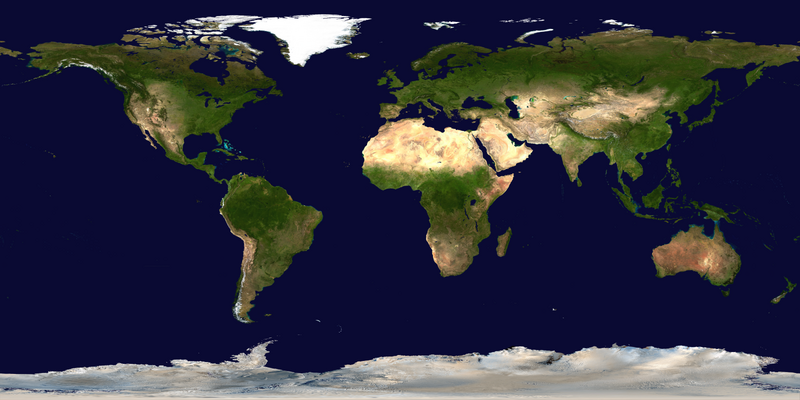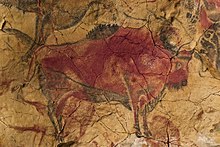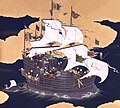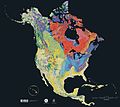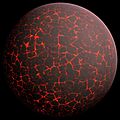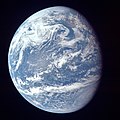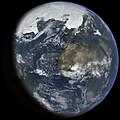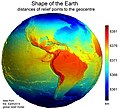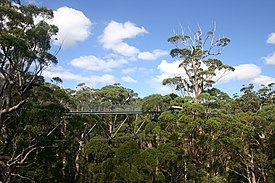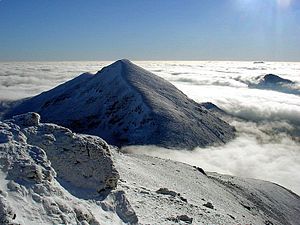The World Portal

The world is the totality of entities, the whole of reality, or everything that exists. The nature of the world has been conceptualized differently in different fields. Some conceptions see the world as unique while others talk of a "plurality of worlds". Some treat the world as one simple object while others analyze the world as a complex made up of parts.
In scientific cosmology, the world or universe is commonly defined as "[t]he totality of all space and time; all that is, has been, and will be". Theories of modality talk of possible worlds as complete and consistent ways how things could have been. Phenomenology, starting from the horizon of co-given objects present in the periphery of every experience, defines the world as the biggest horizon or the "horizon of all horizons". In philosophy of mind, the world is contrasted with the mind as that which is represented by the mind. Theology conceptualizes the world in relation to God, for example, as God's creation, as identical to God or as the two being interdependent. In religions, there is a tendency to downgrade the material or sensory world in favor of a spiritual world to be sought through religious practice. A comprehensive representation of the world and our place in it, as is found in religions, is known as a worldview. Cosmogony is the field that studies the origin or creation of the world while eschatology refers to the science or doctrine of the last things or of the end of the world.
In various contexts, the term "world" takes a more restricted meaning associated, for example, with the Earth and all life on it, with humanity as a whole or with an international or intercontinental scope. In this sense, world history refers to the history of humanity as a whole and world politics is the discipline of political science studying issues that transcend nations and continents. Other examples include terms such as "world religion", "world language", "world government", "world war", "world population", "world economy", or "world championship". (Full article...)
Selected articles -
General images -
Megacities of the world -
Jakarta (/dʒəˈkɑːrtə/; Indonesian pronunciation: [dʒaˈkarta] , Betawi: Jakartè), officially the Special Capital Region of Jakarta (Indonesian: Daerah Khusus Ibukota Jakarta, abbreviated to DKI Jakarta) and formerly known as Batavia until 1949, is the nation's capital city and the centre of the largest metropolis of Indonesia. Lying on the northwest coast of Java, the world's most populous island, Jakarta is the largest metropole in Southeast Asia, and serves as the diplomatic capital of ASEAN. Jakarta is bordered by two provinces: West Java to the south and east; and (since 2000, when it was separated from West Java) Banten to the west. The Special Capital Region has a status equivalent to that of a province. Its coastline faces the Java Sea to the north, and it shares a maritime border with Lampung to the west. Jakarta's metropolitan area is ASEAN's second largest economy after Singapore.
Jakarta is the economic, cultural, and political centre of Indonesia. It possesses a province-level status and has a population of 10,679,951 as of mid-2022. Although Jakarta extends over only 661.23 km2 (255.30 sq mi) and thus has the smallest area of any Indonesian province, its metropolitan area covers 9,957.08 km2 (3,844.45 sq mi), which includes the satellite cities of Bogor, Depok, Tangerang, South Tangerang, and Bekasi, and has an estimated population of 32.6 million , making it the largest urban area in Indonesia and the second-largest in the world (after Tokyo). Jakarta ranks first among the Indonesian provinces in the human development index. Jakarta's business and employment opportunities, along with its ability to offer a potentially higher standard of living compared to other parts of the country, have attracted migrants from across the Indonesian archipelago, making it a melting pot of numerous cultures. (Full article...)Did you know -

- ... that in March 2020, there were nearly 1,500 medical cyclotrons in operation worldwide?
- ... that in the 1916 Declaration of Sainte-Adresse Britain, France and Russia committed to securing the political and economic independence of Belgium after the First World War?
- ... that in his sculptures for the Daily Mirror, Ben Enwonwu carved a "religious group" flying news all over the world?
- ... that goalkeeper Daniela Solera had the most touches of any Costa Rican player in their opening match of the 2023 World Cup?
- ... that during World War II, Oscar Holmes became the first black US naval aviator only because the still-segregated Navy initially thought that the light-skinned Holmes was white?
- ... that R. B. Schlather directed the world premiere of Hertzberg's chamber opera The Rose Elf in Brooklyn, as well as Cimarosa's L'Italiana in Londra and Puccini's Madama Butterfly at the Oper Frankfurt?
- ... that Austrian master metalsmith Cyril Colnik chose to close his shop rather than make armaments for World War I?
- ... that Guy Alfred Wyon helped discover a remedy for TNT poisoning in British shell factories in World War I?
Countries of the world -

Spain, or the Kingdom of Spain, is a country located in Southwestern Europe, with parts of its territory in the Atlantic Ocean, the Mediterranean Sea and Africa. It is the largest country in Southern Europe and the fourth-most populous European Union member state. Spanning across the majority of the Iberian Peninsula, its territory also includes the Canary Islands in the Atlantic Ocean, the Balearic Islands in the Mediterranean Sea, and the autonomous cities of Ceuta and Melilla in Africa. Peninsular Spain is bordered to the north by France, Andorra, and the Bay of Biscay; to the east and south by the Mediterranean Sea and Gibraltar; and to the west by Portugal and the Atlantic Ocean. Spain's capital and largest city is Madrid, and other major urban areas include Barcelona, Valencia, Zaragoza, Seville, Málaga, Murcia, Palma de Mallorca, Las Palmas de Gran Canaria, and Bilbao.
In early antiquity, the Iberian Peninsula was inhabited by Celtic and Iberian tribes, along with other local pre-Roman peoples. With the Roman conquest of the Iberian Peninsula, the province of Hispania was established. Following the Romanization and Christianization of Hispania, the fall of the Western Roman Empire ushered in the inward migration of tribes from Central Europe, including the Visigoths, who formed the Visigothic Kingdom centred on Toledo. In the early eighth century, most of the peninsula was conquered by the Umayyad Caliphate, and during early Islamic rule, Al-Andalus became a dominant peninsular power centred in Córdoba. Several Christian kingdoms emerged in Northern Iberia, chief among them Asturias, León, Castile, Aragon, Navarre, and Portugal; made an intermittent southward military expansion and repopulation, known as the Reconquista, repelling Islamic rule in Iberia, which culminated with the Christian seizure of the Nasrid Kingdom of Granada in 1492. The dynastic union of the Crown of Castile and the Crown of Aragon in 1479 under the Catholic Monarchs is often considered the de facto unification of Spain as a nation-state. (Full article...)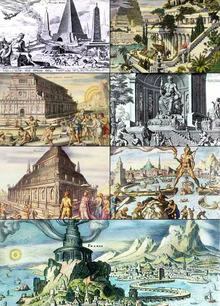
The Seven Wonders of the Ancient World, also known as the Seven Wonders of the World or simply the Seven Wonders, is a list of seven notable structures present during classical antiquity. The first known list of seven wonders dates back to the 2nd–1st century BC.
While the entries have varied over the centuries, the seven traditional wonders are the Great Pyramid of Giza, the Colossus of Rhodes, the Lighthouse of Alexandria, the Mausoleum at Halicarnassus, the Temple of Artemis, the Statue of Zeus at Olympia, and the Hanging Gardens of Babylon. Using modern-day countries, two of the wonders were located in Greece, two in Turkey, two in Egypt, and one in Iraq. Of the seven wonders, only the Pyramid of Giza, which is also by far the oldest of the wonders, still remains standing, while the others have been destroyed over the centuries. There is scholarly debate over the exact nature of the Hanging Gardens, and there is doubt as to whether they existed at all. (Full article...)Related portals
Protected areas of the world -
Selected world maps
World records
- List of Olympic records in athletics
- List of world records in athletics
- List of junior world records in athletics
- List of world records in masters athletics
- List of world youth bests in athletics
- List of IPC world records in athletics
- List of world records in canoeing
- List of world records in chess
- List of cycling records
- List of world records in track cycling
- List of world records in finswimming
- List of world records in juggling
- List of world records in rowing
- List of world records in speed skating
- List of world records in swimming
- List of IPC world records in swimming
- List of world records in Olympic weightlifting
Topics
Categories
Wikimedia
The following Wikimedia Foundation sister projects provide more on this subject:
-
Commons
Free media repository -
Wikibooks
Free textbooks and manuals -
Wikidata
Free knowledge base -
Wikinews
Free-content news -
Wikiquote
Collection of quotations -
Wikisource
Free-content library -
Wikispecies
Directory of species -
Wikiversity
Free learning tools -
Wikivoyage
Free travel guide -
Wiktionary
Dictionary and thesaurus
